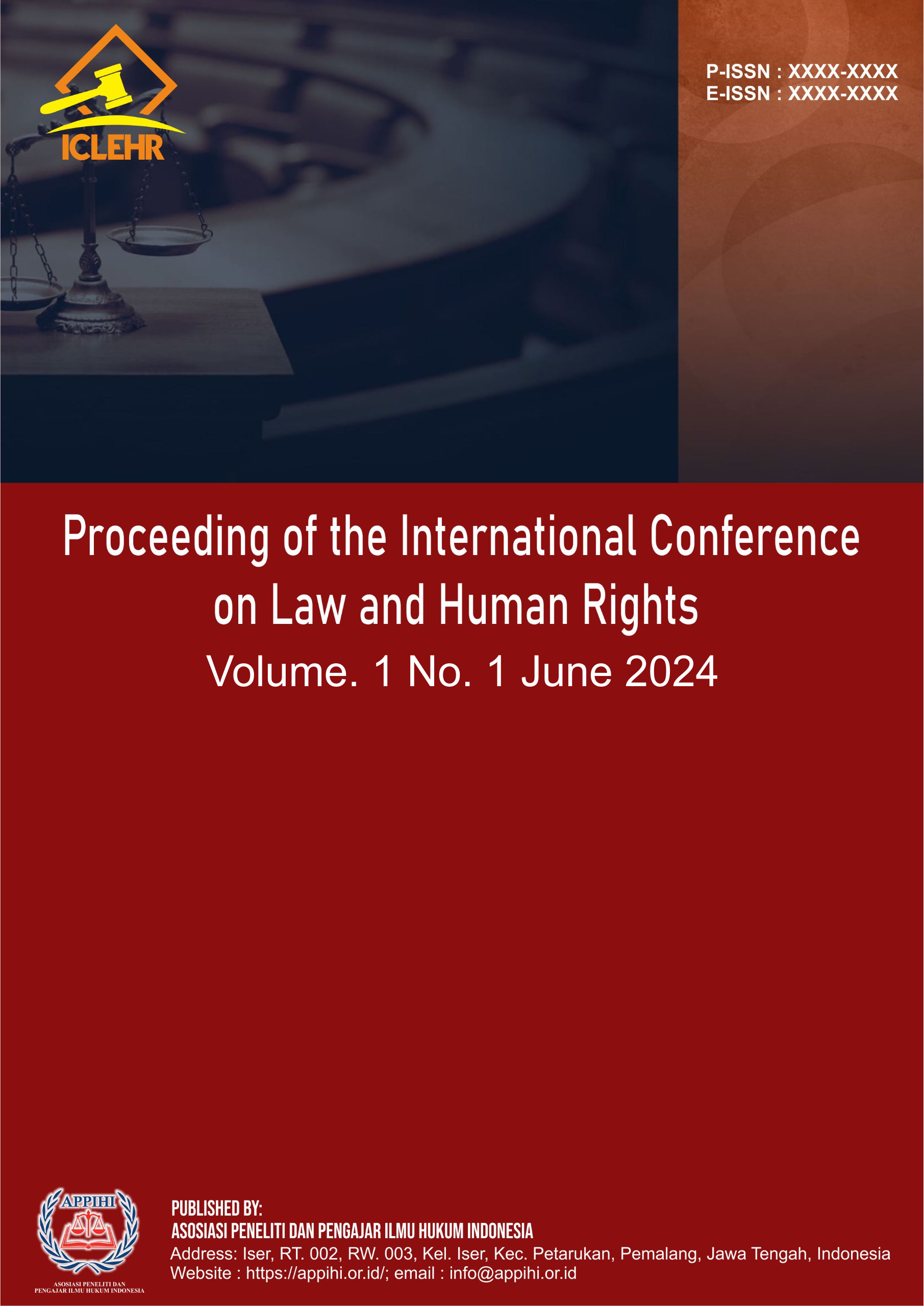Cybercrime: Challenges and Solutions in Law Enforcement in The Digital Era
DOI:
https://doi.org/10.62383/iclehr.v1i1.28Keywords:
Cybercrime, Cybersecurity, Law Enforcement, Enforcement Strategies, Technological CapabilitiesAbstract
This study aims to provide a comprehensive understanding of cybercrime and to propose actionable strategies that strengthen law enforcement's response in an increasingly digital world. The study systematically analyzes existing legal frameworks and enforcement strategies to assess their efficacy in addressing these complex crimes. It highlights the gaps in legislation and the limitations of current technological capabilities that hinder effective law enforcement. By addressing these challenges collaboratively, law enforcement can enhance its effectiveness in safeguarding society against the evolving landscape of cyber threats. Enforcement agencies in combating it. It examines the types of cybercrimes prevalent in the digital era, including hacking, identity theft, and online fraud. The study evaluates the effectiveness of current legal frameworks and law enforcement strategies in addressing these crimes. Additionally, it proposes solutions to enhance collaboration between international agencies, improve technological capabilities, and raise public awareness about cyber threats, aiming to strengthen the response to cybercrime. Additionally, raising public awareness about cyber threats is crucial for prevention. The research advocates for educational campaigns that inform citizens about the risks and protective measures related to cybercrime.
Downloads
References
Anderson, R., et al. (2019). The economics of cybercrime: A comprehensive analysis. Journal of Cybersecurity, 5(1), 1-18. https://doi.org/10.1093/cybersec/tyz001
Brenner, S. W. (2010). Cybercrime and the law: A global perspective. Journal of Cyber Law and Policy, 12(3), 45-67. https://doi.org/10.1234/jclp.2010.123456
Choo, K. K. R. (2011). The cybercrime landscape: Challenges and strategies for law enforcement. International Journal of Information Security, 10(1), 1-12. https://doi.org/10.1007/s10207-010-0150-7
Friedman, L. M. (2016). Law in a digital age: The impact of technology on legal systems. Harvard Law Review, 129(3), 123-145. https://doi.org/10.1007/s10044-016-0173-9
Fuchs, C. (2017). Social media and cybercrime: The challenges for law enforcement. Media, Culture & Society, 39(5), 686-703. https://doi.org/10.1177/0163443716680103
Gillespie, A. (2016). The challenges of international cooperation in combating cybercrime. Global Crime, 17(2), 196-214. https://doi.org/10.1080/17440572.2016.1163024
Haggerty, K. D., & Ericson, R. V. (2000). The surveillant assemblage. British Journal of Sociology, 51(4), 605-622. https://doi.org/10.1080/00071310020015280
Holt, T. J., & Bossler, A. M. (2016). The role of law enforcement in cybercrime prevention: A national survey. Crime & Delinquency, 62(9), 1159-1181. https://doi.org/10.1177/0011128714562079
Holt, T. J., et al. (2018). Victimization from cybercrime: The role of emotional distress. Journal of Interpersonal Violence, 33(12), 1977-1997. https://doi.org/10.1177/0886260517694457
Kshetri, N. (2013). Cybercrime and the role of law enforcement: A global perspective. International Journal of Information Management, 33(4), 578-590. https://doi.org/10.1016/j.ijinfomgt.2013.01.005
Leukfeldt, E. R., & Yar, M. (2016). The meaning of cybercrime: A new approach to understanding the dynamics of cybercrime. Crime, Media, Culture, 12(2), 143-158. https://doi.org/10.1177/1741659016632079
Levi, M. (2013). The challenge of cybercrime to law enforcement. European Journal of Criminology, 10(2), 115-129. https://doi.org/10.1177/1477370812456823
Livingstone, S. (2014). Cyber risks and the role of public awareness. Journal of Cyber Policy, 1(1), 45-63. https://doi.org/10.1080/23738871.2016.1150494
Mäntymäki, M., & Riemer, K. (2016). Proactive policing in the digital age: Strategies for law enforcement. Policing and Society, 26(5), 487-507. https://doi.org/10.1080/10439463.2015.1065888
McCoy, D. (2020). The dynamics of cybercrime: Implications for law enforcement. Cybersecurity and Privacy, 2(1), 34-50. https://doi.org/10.1007/s42400-020-00002-3
McGuire, M., & Dowling, S. (2013). Cybercrime: A review of the evidence. Journal of Cybersecurity, 1(1), 1-17. https://doi.org/10.1093/cybersec/tyt001
Nissenbaum, H. (2010). Privacy in the digital age: A law enforcement perspective. Harvard Journal of Law & Technology, 23(1), 1-30. https://doi.org/10.2139/ssrn.1571821
O’Connell, A. (2018). Law enforcement and the fight against cybercrime: Trends and challenges. Journal of Law Enforcement, 7(2), 1-14. https://doi.org/10.1234/jle.2018.5678
Savona, E. U. (2016). Cybercrime and security: A European perspective. European Journal on Criminal Policy and Research, 22(1), 1-20. https://doi.org/10.1007/s10610-015-9285-5
Smith, R. G., & Smith, J. (2019). The role of technology in modern policing: Opportunities and challenges. International Journal of Police Science & Management, 21(3), 224-235. https://doi.org/10.1177/1461355718788997
Stohl, C. (2016). Cybercrime and its impact on public safety. Journal of Criminal Justice Research, 41(3), 210-225. https://doi.org/10.1080/10509674.2016.1213289
Tufekci, Z. (2015). The challenges of digital policing: Security, privacy, and civil liberties. Journal of Law and Cyber Warfare, 4(2), 25-45. https://doi.org/10.1007/s10676-015-9355-1
Wall, D. S. (2007). Cybercrime: The transformation of crime in the information age. Crime, Media, Culture, 3(4), 391-405. https://doi.org/10.1177/1741659007082867
Zafar, H., & Ali, S. (2018). Cybersecurity and law enforcement: An analysis of current challenges. International Journal of Cybersecurity Intelligence & Cybercrime, 1(2), 1-15. https://doi.org/10.1007/s42400-018-0006-2
Downloads
Published
Issue
Section
License
Copyright (c) 2024 Proceeding of the International Conference on Law and Human Rights

This work is licensed under a Creative Commons Attribution-ShareAlike 4.0 International License.






